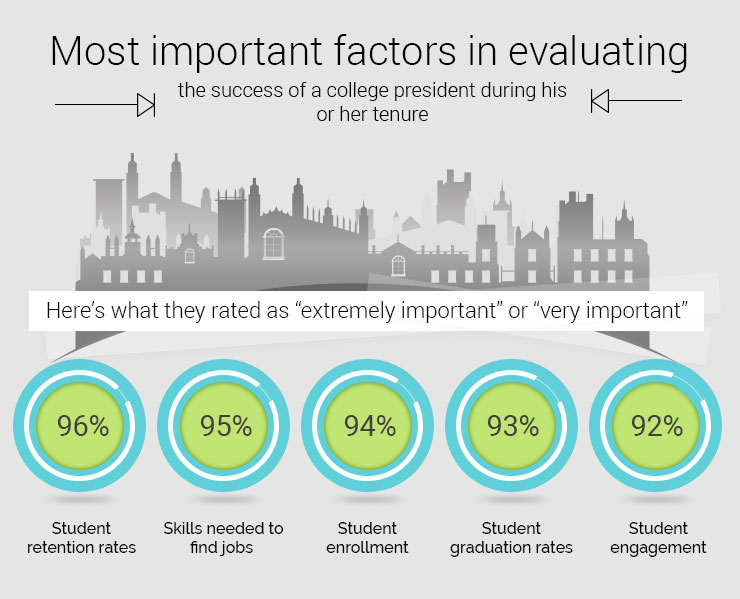
The Importance of Student Engagement and Why It’s So Hard
You don’t have to look for long to find research on the importance of student engagement. Boiling it down, student engagement is often the difference between student success and student failure. Students who are more engaged simply do better. They are more likely to reach their goals and enjoy themselves along the way. Communication is a critical link to helping students become more engaged, as is the technology to empower them.
The Journal of College Student Development published an insightful study entitled “What Student Affairs Professionals Need to Know about Student Engagement.” In it, it cites another study that found “the amount of time and energy students put forth – student engagement – is positively linked with the desired outcomes of undergraduate education.”
The problem is many students are required to put in too much effort to do menial, administrative tasks. They are expected to schedule appointments with administrators, advisors, and financial aid offices and then wait in lines for their turn – that is, if they ever receive or read the communications intended to remind them. Many schools still depend on email and have no way of tracking whether or not the messages were sent, received, or opened.
For today’s student who is used to completing so many tasks instantly from their mobile phone, this process seems archaic and painful. For students who have families and/or jobs, this process is nearly impossible. For many, their educational journey becomes too labor-intensive to be worth it. For others, they stumble along constantly behind, missing deadlines, and incurring unnecessary costs.
Making Connections
Student affairs take student engagement seriously, yet are often handicapped if they don’t involve IT into their strategy. Two connections must happen. As good as their intentions, modern technology is the only way they can connect with students. Student affairs cannot work in a vacuum. Neither can IT. The two must connect and work together to solve the challenges of both the institution and the student. Student success is inextricably connected to institutional success.
Technological maturity is highly subjective. Implementing an ERP system may be a huge step forward to an institution who is trying to digitize business processes, but is all of that number crunching solving real problems? Is it helping the institution maintain performance-based funding? If graduation rates aren’t improving, capturing and processing data may not be enough.
The Technology-Student Engagement Connection
Decades ago, it may not have made sense to connect technology with student engagement. IT did their thing and students did theirs. Beyond setting up basic email, online portals and registration, and back office ERP and other systems, it was up to student affairs to engage students through activities. Today, however, is radically different.
These students cannot imagine life without technology. They carry mobile phones with them everywhere they go. In only seconds and from the palm of their hands, they can execute tasks, discover information, and find what they need. They don’t wait in line to pay their electric bills. They don’t go to a bank to deposit a check. And many of them do not regularly open emails. Perhaps this is why only 64 percent of first-year students indicate they frequently get prompt verbal or written feedback from faculty members.
If institutions want to truly engage and communicate with students, they will have to meet students where they are…and it shouldn’t be in a waiting room in an administrator’s office. It needs to be on the devices and through the channels students are using in every other part of their lives.
Institutions may not be able to remove all of the tasks and responsibilities students must complete throughout their educational journey, but they can – through technology – make them much easier and faster to check off their lists. By doing so, students are more apt to complete those requirements and stay connected with their school both during their years of study and beyond.
What Matters Most to Higher Learning Institutions?
Gallup asked 663 college and university presidents across the country “how important are each of the following factors in evaluating the success of a college president during his or her tenure at an institution?” Here’s what they rated as “extremely important” or “very important”:
- 96% – student retention rates
- 95% – ensuring graduates have the skills needed to find jobs in their chosen field
- 94% – student enrollment
- 93% – student graduation rates
- 92% – student engagement

Here are the recommendations Gallup offers, based on the findings:
“Presidents should focus on helping students learn and practice what they do best, so they can build their engagement with school today and can land a great job and lead a purposeful, thriving life in the future. Doing some strategic asking and listening to students and graduates is a good place to start.”
How can a school help students learn and practice what they do best? How can they ensure student retention, graduation, and engagement? How can they boost enrollment and confirm students have required skills?
They can ask and listen to what students are demanding. They can provide them with the latest technology that students actually want to use to succeed – and the very technology they will be required to master in this modern world. From application submission through graduation and alumnae status, they should be able to complete tasks, monitor progress, pay fees, check statuses, communicate with staff, and find what they need from a mobile device. Why? Because this is how their world operates.
What Institutions Have to Gain
Traditionally, student affairs and academics have been focused on student success. IT typically doesn’t have much to do with students. This must change. In order for students to succeed and thus, institutions succeed, IT must have a seat at the table. They will be the ones to enable and empower students beyond what student affairs can do alone.
As campuses implement modern technology, more than just the student stand to benefit. Much of the technology required today is centered around automation. It’s through this automation of manually-intensive processes where institutions can gain significant, if not remarkable, efficiencies. Much of these processes are a series of repetitive, tedious administrative tasks that require massive amounts of time, effort, and manpower. Automation eliminates most, if not, all of it – all while improving accuracy and speed, and reducing errors, risks for non-compliance, and costs.
Modern technology also unlocks the data within ERPs and SISs, connecting the data so institutions have a more comprehensive, integrated profile of each student. This data is easier to access and helps advisors identify at-risk students faster. It gives administrators the ability to help students become more self-sufficient. It assists financial aid offices and students with paperwork and reminders. It helps students and staff communicate more effectively across the channels students are more likely to check – and gives staff a “paper trail” to track message open rates.
What technology is your institution using? Is it solving real problems your institution and students are facing? Is it giving students everything they need to succeed in today’s world? If not, the solution will be found in the balance of technology and academics.
